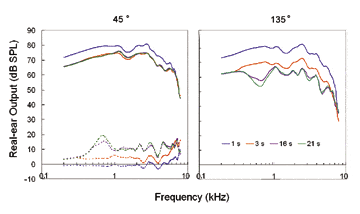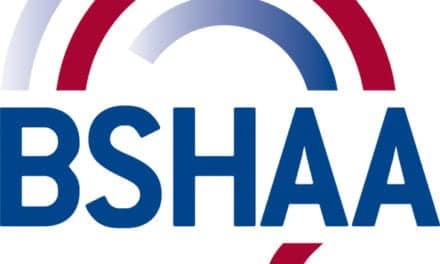Recent evidence1-4 points to a resurgence in real ear measurements (REMs) as the premier verification tool in the hearing instrument fitting process. However, REM testing is not without its challenges. The HR Dispenser Survey5 indicates that, although 67% of all dispensing offices report having REM testing equipment, only 26% routinely perform REMs during hearing instrument fittings. Similarly, this year’s HJ/AO survey reported that 21.5% of practices “always or nearly always” conduct real-ear probe-mic measurements, while another 12.2% say they conduct the test “most of the time.”6 This suggests that, although there is ample evidence that clinicians should be performing REM on all their patients, the test is not universally viewed as a vital part of the verification/fitting process—or is not being conducted due to time constraints and/or the amount of information that can be drawn from the test results.
With a recent product introduction, REM Speech™ developed by MedRx™, it is now easier than ever to make these useful measurements using the most valuable input signal—“live speech”—to verify amplification. Essentially, the system is designed to establish the patient’s hearing levels (HLs) and uncomfortable listening levels (UCLs), then sets the target area for amplification within these parameters. The dispensing professional then measures the hearing instrument output using the REM probe mic while “speaking” to the patient. Likewise, the clinician can use soft, comfortable, and loud speech to “map” hearing aid performance in the ear at different levels.
Within minutes, these essential measurements are performed using REM Speech. In addition, the outcome is easy to interpret by both the operator and patient. The authors believe that Live Speech REMs are, and will remain, the most important protocol required to ensure successful hearing instrument fittings.
A Small Solution for a Large Fitting Problem
The first in a series of micro-computer based technologies, REM Speech is designed specifically to ensure that the “first fit” of the hearing device is the best fit for the patient. REM Speech features Live Speech Mapping as a primary function of the real ear system. Together with powerful counseling and third-party demonstration capabilities, such as the Hearing Loss Simulator and Hearing Aid Simulator, the new device equips a clinic with versatile fitting tools and an engaging and meaningful experience for the patient.
Industry support for the REM is surging. As reported in a recent article by David Hawkins and Jodi Cook:
“…if you want to know what the actual hearing aid is doing on the patient who is going to wear it, you need to make a validation measurement in-situ…”1
Auto-fit programs recommended by device manufacturers are inherently inaccurate1-4 since they cannot take into account all of the physical and anatomical differences between individuals. “Best-fit” models from the hearing instrument manufacturers are unlikely to succeed in a large percentage of cases; these models can only utilize averages, rather than the actual in-situ fitting of the individual patient. In many cases, the starting points are more likely to provide the patient with an unsatisfactory first impression of amplification. REM Speech is designed to reduce the probability of a poor first-fit by utilizing the patient’s own anatomy, and the specific hearing device and coupling to verify amplification.
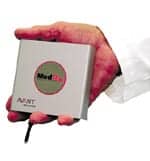
The most obvious feature of REM Speech is its size at only about 4” x 4” x 1”—or about the size of a man’s wallet (Figure 1). Its tiny footprint allows for discreet placement in virtually any office setting, and the convenience of portability if desired. The system is computer-driven and receives its power from the USB port on a computer. There is no external power supply requirement. In addition, REM Speech conveniently provides lighted cues on the top of the device for the dispensing professional, indicating which ear is being tested with a lighted display (eg, illuminating red for right ear and blue for left ear testing).
The system provides both right and left probe microphones, eliminating the need to switch probes from side to side, and it comes with its own speaker system and USB cable to the computer.
How the System Works
REM Speech is accessed through NOAH™, and its software automatically utilizes the client’s stored audiometric data. The menu options available include:
- Live Speech Mapping (LSM)
- Complete ANSI-described Real Ear Measurements (REM) menu
- Hearing Loss Simulator
- Hearing Aid Simulator
- Video Otoscopy (optional)
- Tympanometry (optional)
The focus of this review is Live Speech Mapping.
A critical factor in successful hearing instrument fittings is the patient’s “understanding” of the process. The system addresses this concern with careful attention to how information is displayed for both the patient and the clinician. For Live Speech Mapping, the audiogram is displayed in dB SPL, so that soft sounds are at the bottom of the display and loud sounds are at the top.
When the real ear probe is measuring sound in the ear, a real-time response is plotted to the SPL graph. In this way, it is easy for a patient, third party (eg, spouse, daughter, etc), or dispensing professional to “see” when speech is audible, comfortable, and loud, in relation to the patient’s hearing thresholds and discrete frequency UCLs. Figure 2 shows the audiogram data and displays the Live Speech curve for aided and unaided responses.
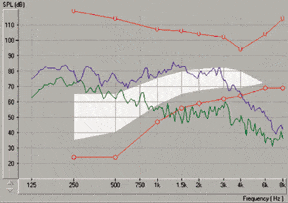
FIGURE 2. Aided (blue line) and unaided (green line) Live Speech Map for moderate level speech.
The target range—the area between threshold and UCL across the frequency range—is the focus of Live Speech Mapping. The Speech Map is designed to ensure that soft speech is audible, moderate-level speech is comfortable, and loud speech never exceeds UCLs (Figure 3).
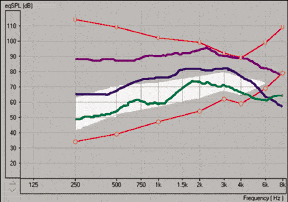
FIGURE 3. Live Speech Map for soft (green line), moderate (blue line), and loud (purple line) speech levels.
“Real time” Live Speech Mapping provides an extremely easy and valid method to verify a hearing instrument fitting while simultaneously programming the device. The fitting process is achieved by presenting the live speech map “on-top” of the manufacturer hearing aid fitting program within NOAH (Figure 4). Once the LSM probe is activated to take measurements, the dispensing professional can then make adjustments to all of the hearing aid performance parameters to ensure there is enough gain for soft and moderate sounds, and sufficient compression is applied to loud sounds. This procedure is performed in “real time” in cooperation with the patient. (For a complete review of the fitting procedure, see Ross and Smith.7)
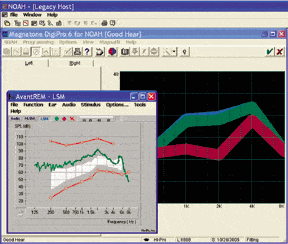
FIGURE 4. The Live Speech Map operates “on top” of the hearing instrument manufacturer’s programming software for simultaneous programming and “real time” in-situ measurements.
Summary
The time saved in fitting hearing instruments well the first time is invaluable. Patients experience greater satisfaction with amplification when the hearing instrument is performing to their needs. There is no better or more valid method to ensure the hearing aid is performing as required than in-situ measurements. Additionally, when the patient is engaged in the fitting process—and understands his/her audiogram and what the hearing device is delivering—it is not uncommon for follow-up visits to decline in number, returns to significantly decline, and more flexible and powerful hearing instruments to be fit.
| This article was submitted by Gay Hosking Poe, MA, and Terry Ross, vice president, MedRx Inc, Largo, Fla. Correspondence can be addressed to HR or Terry Ross, MedRx Inc, 1200 Starkey Rd, Ste 105, Largo, FL 33771; email: [email protected]. |
References
1. Hawkins DB, Cook JA: Hearing aid software predictive gain values: How accurate are they?. Hear Jour. 2003;56(11):26-34.
2. Dillon H, Keidser G. Is probe-mic measurement of HA gain-frequency response best practice? Hear Jour. 2003;56(11):28-30.
3. Aarts NL, Caffee CS. Manufacturer predicted and measured REAR values in adult hearing aid fitting: Accuracy and clinical usefulness. Intl J Audiol. 2005;44:293-301.
4. Aarts NL, Caffee CS. The accuracy and clinical usefulness of manufacturer-predicted REAR values in adult hearing aid fittings. The Hearing Review. 2005;12(12):16-22.
5. Strom KE. The HR 2005 dispenser survey. The Hearing Review. 2005;12(6):18-36,72.
6. Kirkwood DH. When it comes to hearing aids, “more” was the story in ‘04. Hear Jour. 2005;58(5):28-37.
7. Ross T, Smith KE. How to use live speech as part of a hearing instrument fitting and verification process. The Hearing Review. 2005;12(6):40-46.


